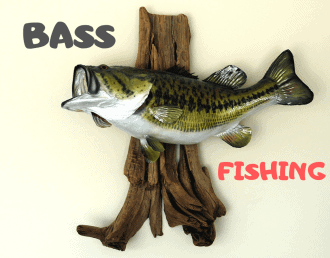Fishing is a very rewarding sport or activity of leisure for those who know the best time of day to fish for bass. While rookie fishing enthusiasts often think that the activity is a passive one, bass and all other fish bites in certain trends. They must, therefore, be hunted actively and skillfully. Otherwise, they are very slippery creatures whose instinct is powered by self-preservation like all other animals.
What Would Be The Best Time Of Day To Fish For Bass?
This article is going to help you understand the best ways to make your bass fishing expeditions rewarding, time efficient and enjoyable. It all has to do with mastering the habits of bass for the sake of adopting timed hunting methods for these delicious and bountiful fish.
The first thing that you should know about bass fishing is that it is an all-year sport. While every season is unique and presents different challenges for humans and fish, the two species exist stably in the ecosystem.
Bass adapts to different seasons by changing seasonal habits just like humans. Therefore, skilled and experienced fishing experts know when and how to fish bass during winter, spring, summer and autumn. While winter may immediately seem like the hardest season for bass fishing, it is the season when you are likely to catch the biggest bass fish you ever did.
Bass are considered to be the moodiest fish that inland lake and river fishing troupes encounter. The typical bass fishing experience can be overwhelmingly rewarding on one occasion and exceedingly frustrating in the next one.
If you find that bass in your fishing locality seem to be all gone, they sure haven’t migrated or been fished all. It only means that something about the water where they habituate has changed. The mildest changes are seasonal changes, and they can be drastic over time. From fluctuating weather conditions to fully-fledged seasonal shifts, water temperatures can determine the success rate of bass fishing.
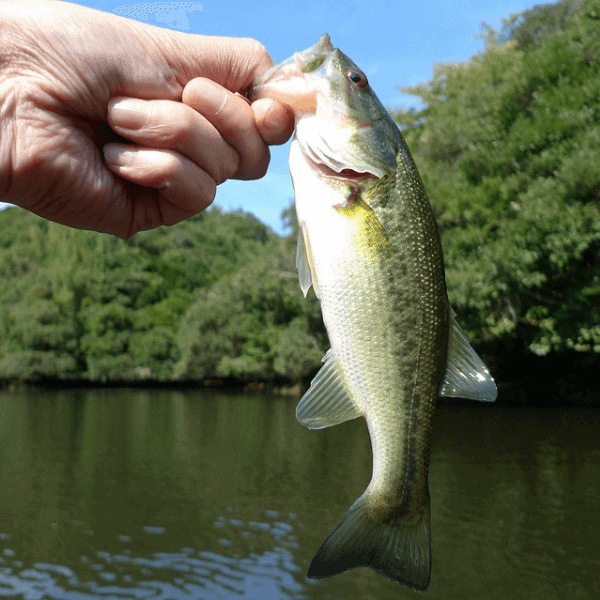
Successfull BASS Fishing Timings:
The secret of successful bass fishing really lies on timing. There are some seasons and weather conditions in which bass are always more willing to come out and eat. In such seasons and weather conditions, you are likely to catch many bass. The reason is that fish are cold-blooded animals, and they are always more active in warmer temperatures.
When the temperature is warmer, they metabolize faster and more. That is why they come out to eat more than in colder temperatures. Still, fish must feed and metabolize during the colder seasons and weather conditions. However, they reduce their movements and reserve them for moments when the water is warmest during such cold times. It goes without saying, therefore, that rookie bass fishing enthusiasts are likely to catch more during warm days and seasons.
Water temperatures vary within seasons, and seasonal changes variate water temperature even more. Water bodies are always colder during winter and warmer during summer. Bass also move with the seasons. They are sometimes easier to catch in shallow waters and other times in deep waters.
According to experienced anglers, the seasonal migration is always vertically in water depth and not horizontally. It is during the warmer summer season that bass move upwards with the intention of spawning. This is the season when they multiply fastest and eat the most. The upsurge in the population of bass and their availability on waterbody tops yield rewarding benefits for fishing anglers.
Bass like warm waters, but they try to avoid hot and harsh water temperatures. That is why they are rare to find when the summer afternoons flare up and heat waterbody tops. When the temperature begins increasing in rivers and waters, it drops with depth. By the time water temperatures at the top read about 80 degrees, fish move deeper into the water where it is much cooler. However, they move upwards as the water cools.
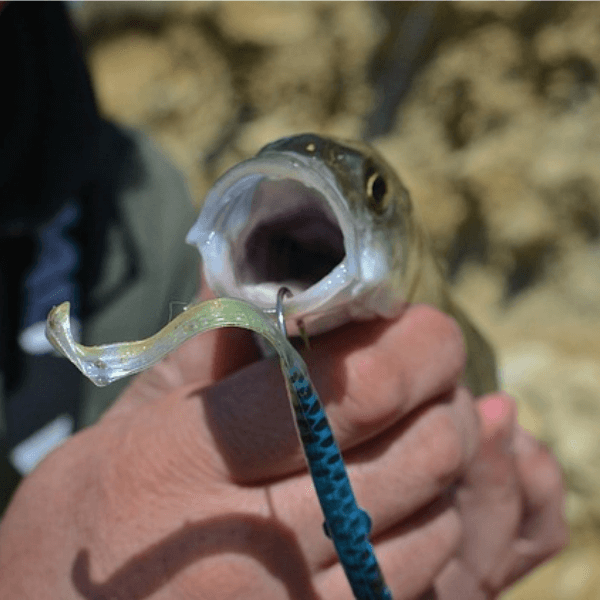
Temperature Fluctuations And Bass Fishing Temperature:
Really Cold Temperature (32-40 Degrees)
When the temperature is this cold, you can be sure to catch most bass deep down in the water. The fish must be visible because bass try to preserve as much energy as possible and won’t chase your bait. Bass dive deeper to avoid the cold temperatures at the top because water isn’t a very good conductor of heat.
Somewhat Cold (40 – 50 Degrees)
You will need a change of fishing bait and equipment although you’ll find it easier spotting and baiting fish. The bass are moving a little more, but they still won’t fret and fuss over your plastic bait.
Warm (50 – 60 Degrees)
The fish are still sticking at the bottom of the waters where it isn’t freezing. They are moving way more though, and they are taking brief trips upwards to catch more food. The bass are more likely to chase after prey in the deep waters in these temperatures.
Optimal (60 – 70 Degrees)
This is that temperature that makes bass jump in and out of water in jubilation. They are often so many that they aren’t warry of fishing nets and hook traps. This is the best time for inexperienced fishing enthusiasts to reap big and enjoy the satisfaction reserved for skilled experts.
Hot (70 – 80+ Degrees)
Hot temperatures make the bass super aggressive and ultimately vulnerable. You can be sure the fish will be busking under shades in the water: especially mate vegetation shades. If you can trap them there, you are likely to reap the benefits of skillful and trailing hunting.
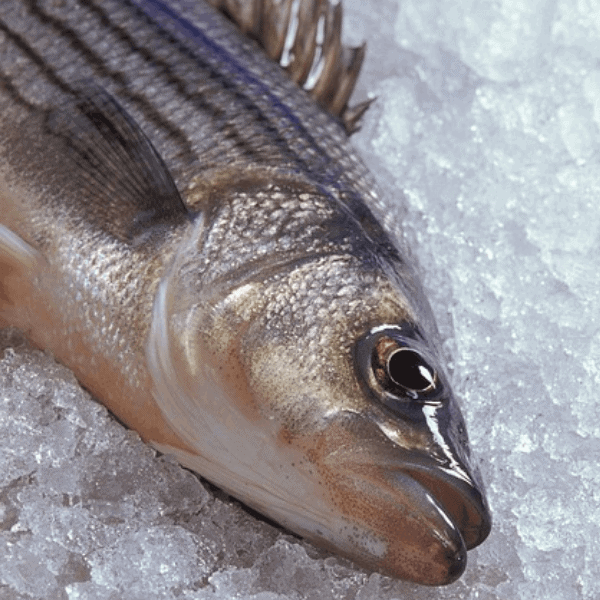
Best Time Of Year To Fish For Bass:
The truth is that there is no ideal time for the general fishing world to fish for bass. It all depends on you, and what your targets in fishing are. Normally, professionals fish all year long, but those who fish for leisure had better do it in the summer holidays when the time allows for travel and merry. However, it is worth noting that spring and fall are the seasons when bass fish are in most abundance.
If you do not go fishing for the sake of earning a living, the best time of the year to fish for bass should be when the weather isn’t extreme in temperature or humidity. This is the time when you won’t struggle physically with this somewhat engaging sport It is also the time when fish are in plenty. The spring and the fall often include the spawning of new bass generations as well as a flurry of bass movement in shallow waters.
Springtime Bass Fishing:
In the spring, water temperatures average at 50 degrees at the beginning and rise gradually. Water bodies begin to warm, and they warm fastest where they are deepest. This encourages rampant spawning. Bass move to the deeper waters where it is warmer and multiply fastest there. To tap into their hubs, all you have to do is follow the shallow paths leading into deep waters. In this season, fish are of average size.
Spring is popularly referred to as the season of equal opportunity for all bass anglers because you can literally catch base at any depth. In spring, simple baiting techniques like crank baiting and spinner baiting are the most rewarding. However, anglers must change techniques during the colder periods of the spring season when bass lurk in deeper waters where it is warmer.
During the colder days, you could have more success using soft-plastic baits, but hard baits will still catch you some bass.
When spring is coldest, you have to drag craw or a jig and plastic chunk along the bottom to get them where they go to hibernate. Weigh the crankbait so it stays in the water long enough to fool your prey.
The other great way to catch deep-water bass is to actively lure spawning bash with bait that appears as predator fish seeking to eat bass offspring. The defensive bass will try protecting the offspring and end up with a hook trapping it.
Bass Habits In The Sweltering Summer:
Summer does not make for the best time of year to fish for bass. In the summer, temperature fluctuations vary with afternoons presenting the highest temperature conditions. Nights also present the lowest water temperatures.
During the summer, the best time of day to fish for bass is in the morning and the evening during sunrise and sunset. In the mornings, summer temperatures are cool, and the bottom of rivers and lakes is often colder than the top.
Bass move to shallow water for this reason where they eat and metabolize. As the day gets hotter, bass move deeper into the water trying to avoid the hot water tops. They come back at the top when the water temperatures begin dropping again thanks to the sun setting.
Unlike people, who are most sluggish in the sweltering heat of the summer, cold-blooded bass move a lot when the temperature moves up a notch. With proper action lures, bass can charge from the bottom waters and fifteen feet high in pursuit of your bait. It is that frequency in movements that makes it increasingly harder for anglers to catch trophy bass during the summer times.
The high-water temperatures make it metabolize very fasts and store little or no fat. Also, it is during the summer time that majority of spawned bass offspring mature into young adulthood. You are likely to catch numerous averagely sized bass and very few gigantic ones.
Bass Habits During The Freezing Winter:
In the winter, bass are rare and difficult to fish. However, experienced anglers will find them with proper timing, and winter bass are often quite the prize. In the winter cold, bass do not move much in a bid to preserve energy. They grow bulky and fat. Experienced anglers know to fish for bass early in the morning or late in the evening at deep waters. They are also likely to fish at steep creek channels and also river bends.
The Damiki Rig – Bass Fishing’s New Tactic:
What is a Damiki Rig made of? It simply compromises of a jig head and a fluke that is about 3.5 inches long. The jig head can be made into different shape styles including arrow or round heads. It first features a 90-degree line tie to make the bait look surreal and lifelike. It looks like a small fish that is caught up in a bad situation. The trap is often far too tempting for any bass close by to ignore, and this new trick seems to be working like a charm.
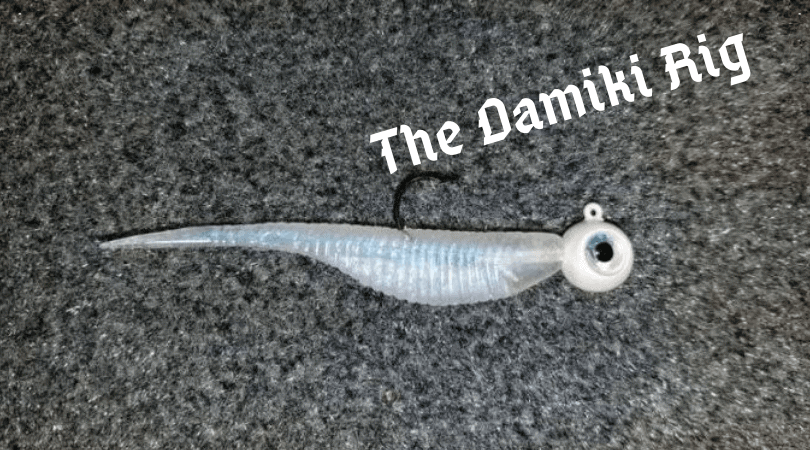
Damiki Rigs are excellent for the hard-to-get bass that seldom chase bait in the winter times. One of the reasons why this new fishing trick is growing more popular each passing season is its impressive track record of catching trophy bass during freezing winter times. It makes for a perfect for drop shots that span across 15 to 30 feet deep.
With the Damiki Rig, you are also set to benefit from revamped accuracy thanks to its streamlined package. Therefore, do not hesitate to use it whenever you are faced with the opportunity of spotting an attractive bass deep under clear water.
One key way to make maximum use of your dashiki rig is to drop it five feet above the bass you intend to catch. If it obliges covering that distance, you can be sure that the fish is serious about its hunting thus guaranteeing you an even more successful hunt.
